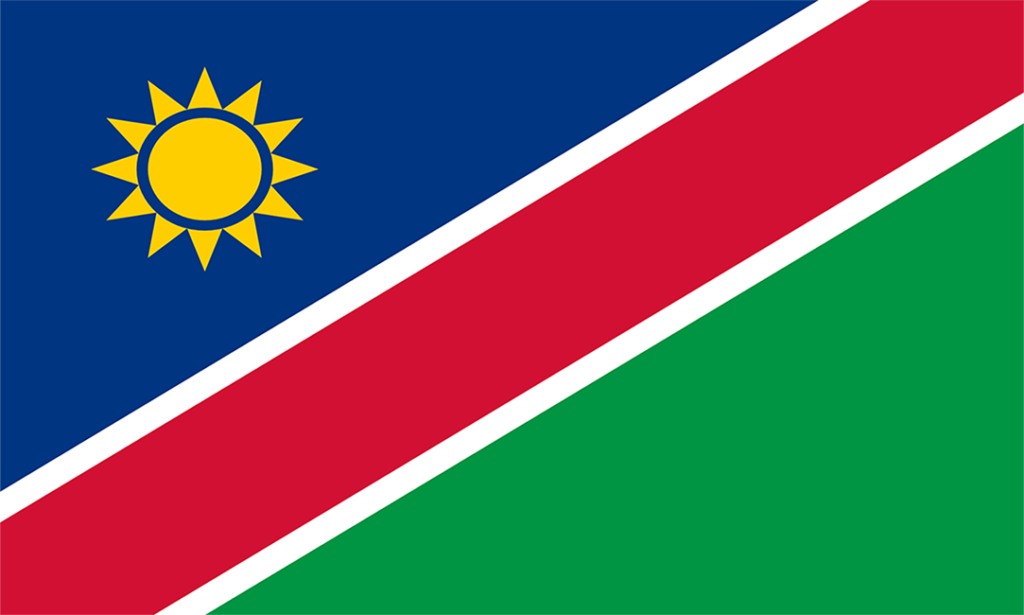National Flag

Namibia’s National Flag was unanimously adopted by the Constituent Assembly on 2 February 1990 as a symbol of the country’s struggle for national unity.
It symbolises peace, unity and common loyalty to Namibia. The National Flag represents the nation in every aspect. The sun symbolises life and energy. The golden colour of the sun represents the warmth and the colour of the plains of the Namib Desert.
The blue symbolises the sky, the Atlantic Ocean, Namibia’s marine resources and the importance of rain and water. Red represents the Namibian people, their heroism and their determination to build a future of equal opportunity for all. White refers to peace and unity, while the green symbolises the country’s vegetation and agricultural resources.
National Coat of Arms
The National Coat of Arms is the official emblem of Namibia. The Coat of Arms is depicted on all official publications and stationery.
The National Flag is reproduced on the shield of the Coat of Arms. It is firmly anchored in the sand of the centuries old Namib Desert.
The fish eagle has excellent vision and is thus also a symbol of the farsightedness of our country’s leaders. The two Oryx antelope on either side of the shield are indigenous, specifically to the semi-arid parts of Namibia. They are renowned for their courage, elegance and pride. The Welwitschia mirabilis, rooted in the desert sand is a unique desert plant, a fighter for survival and, therefore, a symbol of Namibia’s fortitude and tenacity. The headband refers to the traditions of our people and the diamond shapes symbolise the importance of diamonds to the country’s economy.
The motto, Unity, Liberty, Justice enshrines the key principles embodied in the Constitution. Private bodies may not use the Coat of Arms without the express permission of the President.

